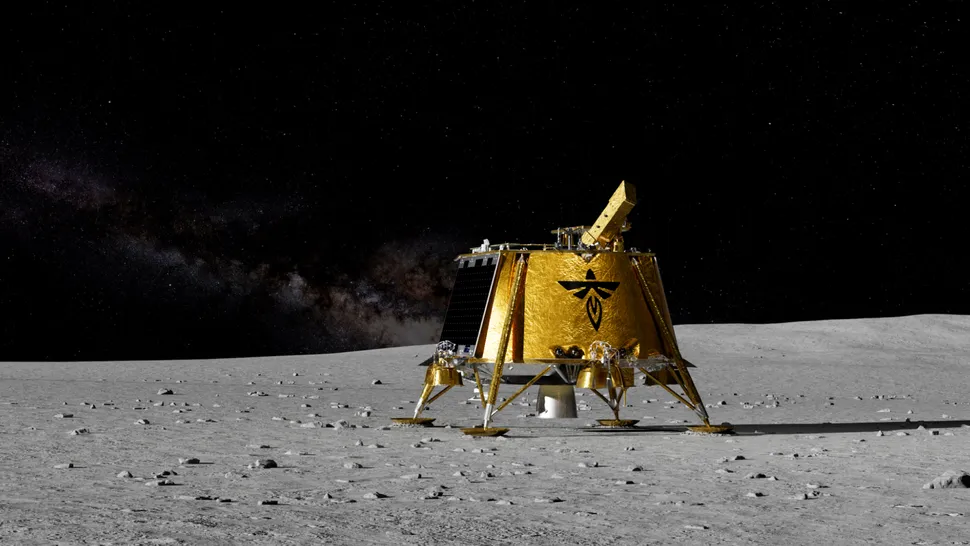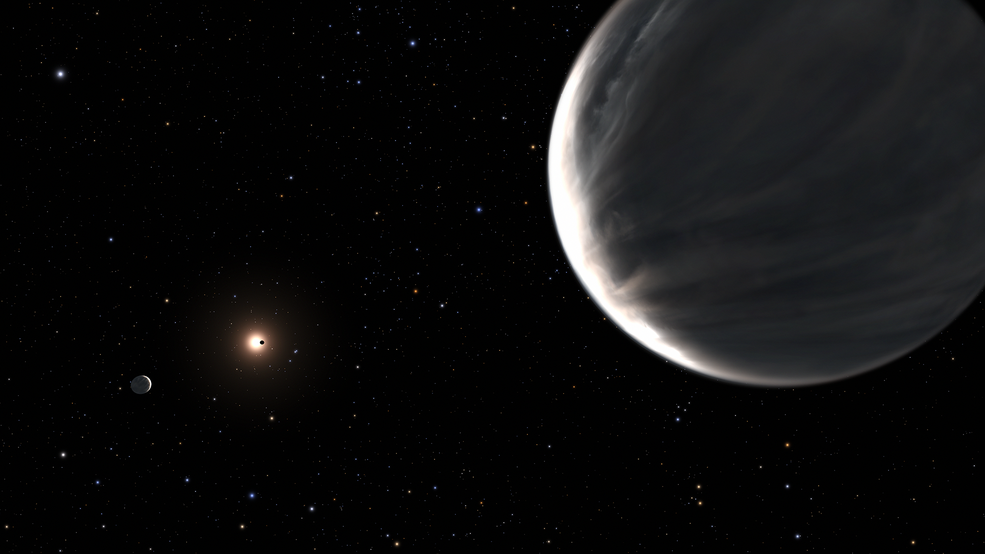Firefly Aerospace’s first mission to the moon is nearly ready to fly.
The company’s Blue Ghost lunar lander arrived at NASA’s Kennedy Space Center (KSC) in Florida on Monday (Dec. 16) for integration with the SpaceX Falcon 9 rocket that will launch the robotic probe — as well as the private Japanese moon lander Resilience — to space.
Blue Ghost Mission 1, named Ghost Riders in the Sky, is scheduled to launch sometime within a six-day window that begins no earlier than mid-January. Firefly was chosen for the mission through NASA’s Commercial Lunar Payload Services (CLPS) program, which contracts companies to deliver NASA science and payloads to the surface of the moon.
“We’re exploring the surface of the moon robotically as part of Artemis, but using services from American companies instead of doing the missions ourselves within NASA. This is part of NASA’s effort to use commercial services and public private partnerships,” explained Joel Kearns, associate administrator of NASA’s Science Mission Directorate, during a mission briefing on Tuesday (Dec. 17). “We’re doing this to take advantage of the technical innovation and entrepreneurship that we see in American private industry to accomplish public goals.”
Ghost Riders in the Sky is carrying 10 NASA payloads and technology demonstrations to test conditions between Earth the moon, as well as on the lunar surface. NASA will use the data collected on this mission and future robotic landers to better shape our understanding of the moon. This effort, in turn, will help the agency establish a sustained human presence on and around the moon via its Artemis program.
Blue Ghost’s science payloads include investigations into interactions of solar wind particles in Earth’s magnetic field and analyses of lunar geology and composition of regolith (moon dust), as well as first-of-their-kind technology demonstrations such as radiation-resistant computer hardware, an electrostatic system to repel harmful dust buildup on component surfaces and testing the abilities of a GPS-like navigation system for the lunar region.
“The NASA payloads on this delivery represent the largest, in terms of quantity manifest, of NASA payloads on a CLPS task order to date,” Ryan Watkins, NASA program scientist for Exploration Science Strategy and Integration Office, told reporters during the briefing on Tuesday.
Here’s a brief rundown of each of the payloads:
- NGLR: The Next Generation Lunar Retroreflector (NGLR) is a device that will serve as a reflective target for pulses shot from Earth-based Lunar Laser Ranging Observatories to measure the distance between Earth and the moon within the sub-millimeter range. NGLR will also collect data relevant to the moon’s interior and theories about dark matter.
- RAC: The Regolith Adherence Characterization (RAC) experiment provides 30 different sample surfaces that will be exposed to the moon’s environment after landing. Observation of the materials’ abrasion over time will help researchers better understand how the lunar environment affects things like the exterior of spacecraft and habitats, spacesuits, infrastructure and other components.
- LEXI: The Lunar Environment Heliospheric X-ray Imager (LEXI) will monitor the interaction of solar wind with Earth’s magnetosphere, and how energy in that environment generates geomagnetic storms and space weather.
- LISTER: The Lunar Instrumentation for Subsurface Thermal Exploration with Rapidity (LISTER) experiment will drill between 6-9 feet (2-3 meters) to measure heat flow at various depths beneath the moon’s surface.
- EDS: The Electrodynamic Dust Shield (EDS) is a technology demonstration that uses electric fields to manipulate dust on a particular surface. As it applies to the types of infrastructure astronauts will one day need on the moon, EDS’ ability to lift and move dust particles could be used to clean regolith from the surface of solar panels, windows, radiators and other equipment sensitive to particle accumulation.
- RadPC: The Radiation Tolerant Computer System (RadPC) is another technology demo aimed at executing a set of fault mitigation strategies to protect a computer’s components from damage caused by ionizing radiation in space and on the moon.
- LMS: The Lunar Magnetotelluric Sounder (LMS) will use the interaction of solar wind and Earth’s magnetic fields to help calculate the electrical conductivity profile inside the moon.
- LPV: The Lunar PlanetVac (LPV) will be used to collect lunar regolith samples using a novel pneumatic procedure powered by compressed gas. The technique will be used to collect surface samples on the moon for analysis by other onboard instruments.
- SCALPSS: Stereo Cameras for Lunar Plume-Surface Studies (SCALPSS) will collect imaging data of the moon during Blue Ghost’s descent to the surface. SCALPSS will study the interaction of the probe’s landing engine with surface dust and measure the size and volume of the displaced regolith from the exhaust crater.
LuGRE: The Lunar GNSS Receiver Experiment (LuGRE) demonstration will use Earth’s Global Navigation Satellite System (GNSS) for spacecraft navigation and position tracking around the moon.
From the launch to the moment the Blue Ghost lander loses power, the entire mission is expected to last 60 Earth days.
“We’ll be collecting critical payload science data throughout the entire mission,” Firefly CEO Jason Kim said Tuesday.
The spacecraft will spend 25 days in Earth orbit before performing a translunar-injection burn to begin a four-day transit to orbit around the moon.
Blue Ghost will spend another 16 days in lunar orbit, phasing into a descent trajectory to land on the surface of the moon for the remaining two weeks of the mission. The lander will touch down autonomously, using vision navigation software to guide its descent. If all systems perform nominally, program scientists expect to receive their first high-definition images from the lunar surface within 30 minutes of landing.
The probe’s 14 Earth days on the moon will constitute a full lunar day. The setting sun will leave Blue Ghost without a power source, and its batteries will slowly deplete as the dark night deepens. Once the darkness falls, the lander’s batteries are expected to last about five hours — but before Blue Ghost’s lights totally go out, it has the final task of capturing the dusk.
Before the sun sets, Blue Ghost’s 360-degree camera will observe a solar eclipse, with Earth passing between our natural satellite and the light of the sun. Following that will be an event not witnessed since astronauts last walked on the moon in 1972, if all goes to plan: “We expect to capture a phenomenon seen and documented by Eugene Cernan during his final steps on Apollo 17, where he observed a horizon glow as the lunar dust levitated on the surface,” Kim said on Tuesday.
“Knowing that Firefly’s Blue Ghost mission is a culmination of what the last Apollo astronaut to walk on the moon observed is a fitting tribute to their legacy,” Kim said. “We’re proud that our mission will support NASA’s critical science and technology operations that will pave the way for a lasting presence for our nation, our partners and the world.”
Source: https://www.space.com/space-exploration/launches-spacecraft/spacex-will-launch-the-private-blue-ghost-moon-lander-with-these-10-nasa-experiments-in-january-2025



